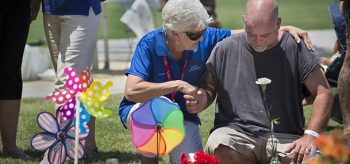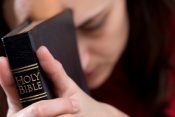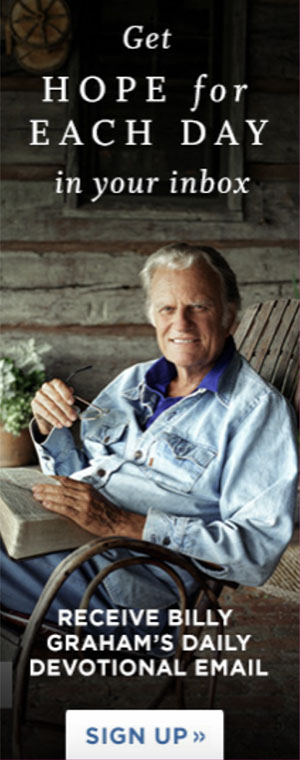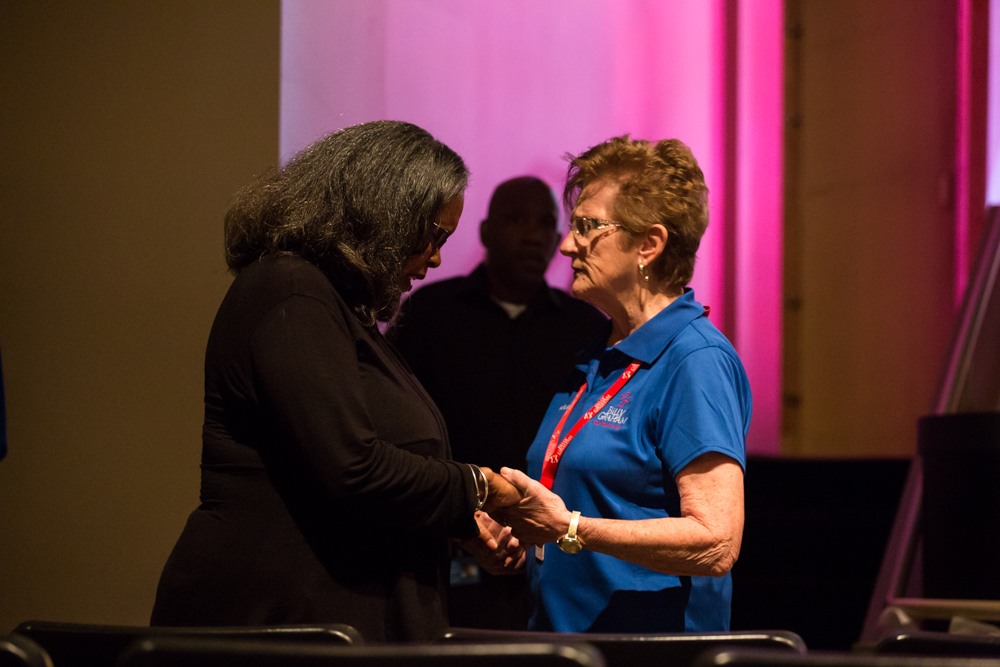
Michele Brown picked up her son, a junior at Monarch High School, and began the drive home to Coconut Creek, Florida. They took notice of the police cars racing by, assuming they were tailing somebody.
They had no idea that the worst had just happened, that the adjacent community would now be the latest in a list of cities that are synonymous with the school shootings that have come to define them. Columbine. Newtown. And now, Parkland.
When they reached their house, Michele—a youth leader at Parkridge Church—received a call from one of her teens and had her son turn on the TV. As the news poured forth with moment-by-moment updates—many injured, casualties confirmed, shooter at large—the magnitude of the situation hit her.
“My heart sunk. I literally just started weeping,” said Michele.
For the next several hours, she and the other youth leaders formed a fast network of information, checking on their students and alerting each other when one was found safe and sound. When they couldn’t reach a young man, two of the leaders took off for his house to confirm that he was OK. He was.
‘We Thought Maybe There Had Been One Victim’
Pastor Eddie Bevill of Parkridge Church first knew that something was amiss when all of the sirens flew by. His church sits near the main exit to the school and the stream of first responders were beyond what he had ever seen.
The church has its own school, which also went into lockdown.
As Pastor Eddie waited and watched outside, frantic parents began flowing into the church parking lot to run to Marjory Stoneman Douglas High School, praying that their sons and daughters were safe.
“We were trying to interact with them and talk with them, praying with a few of them. At this point we still didn’t know much. The details were sketchy. We thought maybe there had been one victim,” said Pastor Eddie.
“It was so unclear. It wasn’t until later that we figured out how bad it really was.”
One of the teachers who is a member of Parkridge Church lost multiple students.
“He said, ‘I want this to be used for the good of God. I want to say the right things.’ And at the same time he’s grieving,” said Eddie.
“One of our students was in the fray of it and had to run past some of the bodies. I think one of his very close friends was one of the deceased. So he saw that happen,” Eddie continued.
Pastor TJ McCormick of Coastal Community Church was at a conference in Dallas when the shooting happened, and returned to South Florida as soon as possible.
One of TJ’s church members is a police officer who was among the first to walk into the high school. He had to move past the bodies of high school students who were taken far too young, of teachers who died protecting their kids. He had to look in the eyes of terrified 14-year-olds who would never be the same again.
“Just trying to deal with finding bodies of students and being so angry that this happened on their watch, and trying to deal with those emotions has been unbelievable,” said TJ.
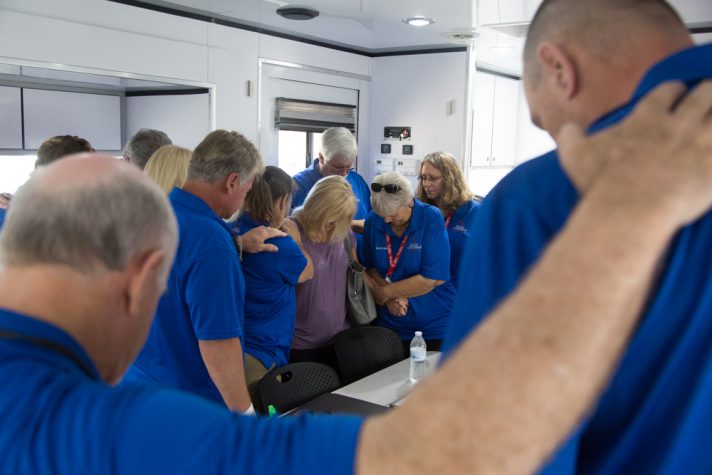
One of America’s Safest Cities
Parkland is as peaceful and quiet as it gets, where everybody feels safe and life is good. In fact, a recent study named it the 15th safest city in the United States.
“This is where everybody lives because of the schools, because of safety, because of community,” said TJ. “Everybody knows everybody, everybody is interconnected.”
Of course, that was before the afternoon of Feb. 14.
The atmosphere is different today, especially in the field at Pine Trails Park, a sprawling recreational area about two miles from Marjory Stoneman Douglas High School. A total of 17 large white crosses, one for each life lost in the massacre, are spread throughout the area.
Somber mourners move from one to the next, laying flowers, lighting candles, praying, crying.
“I have been out here every day, just walking around, praying with people,” said TJ. “You know, this is almost like the people are in an episode of The Walking Dead. They don’t even know how to react.”
And they realize that it’s just the beginning of a long and rocky journey, one that will transition through many stages from shock and disbelief, to raw anger and emotion, to a new normal.
“Months from now, it’s still going to come back and we’re going to be counseling someone who is just sort of waking up and realizing, wait a minute, this really happened,” said Eddie.
Where Is the Hope?
In the midst of pain and unexpected darkness that has covered this sunny community, it’s logical to ask: Where is the hope? Where is the light?
“Jesus. I got nothing else, man. I got nothing else,” said Eddie, as he began to speak of the importance of Christians sharing the hope they have with others.
There may be an uptick in church attendance in the coming weeks, but it is those relationships with neighbors, or the person at the gym, or the colleague in the next office that Eddie sees as the best opportunity to truly exhibit the hope of Jesus in these dark times.
TJ added, “We have a saying. ‘We do life together.’ I think the thing that’s going to make the biggest difference right now. Locking arm-in-arm with our neighbors, our friends, our co-workers that are hurting. Saying, ‘I’m hurting too, but we’ll get through this together. I’m going to show you the hope that I’ve found and I hope it can be your hope, too.’”
Michele already sees that in action with her youth.
“I met with a girl yesterday and she said that she wants this to be an opportunity to share the hope of Christ,” she said.
“So many kids, they don’t know the Lord, so we’re just praying that our students that are believers—and other students from other churches that are believers—that this can just be a time for them to really be able to share that hope of Jesus. There’s so much despair. It’s going to be a process to grieve, to heal.”
Michele added, “Whenever something hits like this, people run from God or they run to God. My prayer is just that especially for our youth, they’ll run to God instead of running away.”
‘Thankful’ for Trained Chaplains
As soon as news broke, the Billy Graham Rapid Response Team—a ministry of crisis-trained chaplains who are ready to respond at a moment’s notice to natural and man-made disasters—began monitoring the situation and preparing to respond. The first chaplains arrived hours after the shooting to assess the situation and how they could come alongside the churches in the area to share the hope and comfort of Jesus with those who are hurting.
The chaplains have a ministry of presence, simply being in the memorial area and available to listen, hug and pray. Sometimes no words are needed. A shoulder to cry on is enough.
“I even feel like, how do I even do this? That’s why I’m so thankful to see the Billy Graham Rapid Response Team counseling, because I want to be able to encourage them [the students],” said Michele.
“Of course I can pray for them, and share Scripture with them and pray over them and listen to them—which my prayer is that will be very helpful—but I’m also so thankful for you guys that are more trained in the counseling and helping with the grief.”
How to Pray for Parkland
As locals like Michele, Eddie and TJ face the days ahead, many are asking for prayer. Here are three ways you can pray:
- Pray for the families of students and teachers who died in the shooting. Pray the community continues to support them in the months to come and that they will know God’s inexplicable comfort personally.
- Pray for the youth and adults who witnessed this horrific event—that they will seek counsel and not hold in their emotions. Ask God to bring peace to their hearts and minds.
- Pray that those affected will run to Christ and not away from Him. Pray that the greatest Healer of all will mend even the deepest of wounds.
Even in dark times, you can have hope.
